Fisheries sector: A wasted resource for poultry feed
Despite vast coastline, mismanagement and lack of investment keep fish meal from becoming sustainable alternative

Despite having a 1,050 km coastline and vast inland waters, Pakistan has failed to capitalise on its fisheries sector to develop a sustainable poultry feed industry. Fish meal, a high-protein feed ingredient made from small fish and fish waste, could significantly reduce the country's dependence on expensive soybean imports, saving millions in foreign exchange.
However, due to a lack of government focus, mismanagement, and quality concerns, the industry has remained underdeveloped. Experts warn that without urgent reforms, Pakistan risks missing a major opportunity to strengthen its poultry sector while boosting the local economy.
Pakistan's fishing sector generates $534 million in exports and supports thousands of jobs, yet lags behind regional competitors, according to the Pakistan Institute of Development Economics (PIDE). Urgent reforms are needed to unlock its economic benefits, support fishing communities, and improve food security.
Based on recent statistics and data from the Pakistan Poultry Association, the country has emerged as the 11th largest poultry producer globally, with a yearly turnover above Rs1,533 billion. The contribution from commercial poultry includes 2.028 million tonnes of meat and 19.170 billion eggs. However, the per capita availability of poultry meat in Pakistan remains at 5kg per year, with 51 eggssignificantly lower than the figures seen in developed countries, where it stands at 41kg of meat and 300 eggs annually, according to the official website of the National Library of Medicine of the United States government.
Pakistan's feed industry has experienced significant fluctuations in recent years due to its reliance on imported genetically modified organism (GMO) soybeans. Following a three-year suspension, the approval of GMO soybean imports a month ago has led to a rebound in feed production, which had previously declined from an annual high of 8.59 million metric tonnes (MMTs) to 4.55.9 MMTs. The industry's output has since recovered to approximately 7 MMTs and is projected to reach 9 MMTs soon; however, it comes at a high foreign exchange cost. Around 1.6 to 2.2 million metric tonnes (MT) per year is consumed by poultry.
In Pakistan, the previous restriction on GMO soybean imports impacted the poultry industry and caused production to nearly halve, as the country has not tapped into alternative feed such as fish meal.
Majeed Motani, Founding Member of the Pakistan Fisherfolk Forum, discussed the use of fish meal in poultry feed, highlighting several key aspects.
He explained that there are two types of fish meals available in the market. One has lower protein content and is produced using traditional methods, while the other is made from fresh fish scraps in automated plants, which is also exported and used in local poultry feed. However, fish availability has declined, and soybean meal has become a more common alternative.
Motani pointed out that the soybean meal used in poultry feed is not complete but primarily consists of soybean husk, which is more affordable compared to fish meal. As a result, poultry feed manufacturers use minimal fish meal, reducing costs. However, he noted that while soy-based feed takes longer to support poultry growth, fish meal ensures faster and healthier development of chickens.
Last year, fish meal prices reached Rs95 per kg, but due to the increased use of soybean meal, prices have dropped to Rs4045 per kg. He also mentioned that in the Ibrahim Hyderi industrial area, most fish meal factories operate with automated plants that process fresh fish instantly.
"The fish meal is primarily produced only in Karachi and is a seasonal product rather than being available throughout the year," former Chairman of the Pakistan Poultry Association (North Zone) Dr Abdul Karim told The Express Tribune. It is derived from small fish that are not consumed by humans and is instead processed into meal for poultry feed.
However, the fish meal industry in Pakistan has struggled due to quality adulteration, making it an undesirable ingredient for poultry farms, especially in Punjab, he said. Adulteration significantly reduces its nutritional value, rendering it ineffective as a reliable protein source. While fish meal has historically been an essential source of protein, alternative animal-based and plant-based protein sources are now being used in poultry feed.
Among plant-based protein sources, soybean meal is considered the best option for poultry feed due to its high protein content, digestibility, and balanced amino acid profile. In Pakistan, canola meal is also used, but soybean meal remains the preferred choice due to its superior nutritional benefits.
Saeed Baloch, General Secretary of the Pakistan Fisherfolk Forum, highlighted that fish meal in Pakistan is primarily made from fish waste, commonly known as trash fish. "While the industry continues to operate, it has not experienced significant growth," he added. Traditionally, low-income groups consumed trash fish, which includes species such as Mori, Barra, Doma, Chakoo, Loovar, Mori Kechak, Prah, and Choddi. However, in recent years, fish meal production has shifted towards industrial use. Despite its role in animal feed, the industry has struggled to expand due to multiple challenges.
Last year, the price of trash fish was around Rs80-90 per kilogram. However, due to the bulk availability of soybeans, the price has now dropped to Rs40-50 per kilogram, "meaning it has decreased by half compared to last year," Baloch said.
A major factor affecting fish meal production is the poultry industry's complete shift to soybean-based feed. Once reliant on fish meal, especially in Karachi, poultry producers now prefer soybean by-products due to their affordability and high protein content. Soybean meal, a primary by-product of soybean processing, serves as an essential feed ingredient for poultry.
The process involves crushing soybeans to extract soy oil, leaving behind protein-rich soybean meal. This meal undergoes defatting and heat treatment to remove anti-nutritional factors before being ground and mixed with other feed components. Additionally, soy hulls, a fibrous by-product, are used in livestock feed. The poultry sector's dependence on soybeans has significantly reduced the demand for fish meal in Pakistan.
Apart from declining demand, Pakistan's fishing industry faces severe challenges due to rising fuel costs and overfishing, said Baloch. High fuel prices have made fishing operations increasingly expensive, preventing many fishermen from expanding their businesses. Boats require substantial fuel for deep-sea fishing, and the escalating costs have considerably reduced profit margins. Additionally, overfishing has become a critical problem, driven by factors such as lack of regulation, the use of fine-mesh nets that capture juvenile fish, growing seafood demand, and illegal fishing practices. As a result, fish stocks are depleting rapidly, leading to economic difficulties for small-scale fishermen and disrupting marine ecosystems.
Another major hurdle is the lack of investment in Pakistan's fishing sector. Expanding and modernising the industry requires significant capital, but large investors have shown little interest in the sector. Without adequate funding, fishermen are left with outdated equipment, increasing operational costs, and declining fish populations due to overfishing. This has led to reduced income opportunities for fishermen, making it harder for them to sustain their livelihoods. Addressing these challenges requires strong policy interventions, investment in modern fishing techniques, and stricter regulations on overfishing to ensure long-term sustainability, Baloch suggested.
One of the best animal-based protein sources for poultry feed is meat and bone meal, which is derived as a byproduct from slaughterhouses, said Karim. In Pakistan, this source is commonly used due to its high protein and calcium content, which supports poultry growth and bone development. Additionally, poultry remains are also processed and included in poultry feed. However, strict quality control is required to ensure these byproducts are free from contamination and pathogens. While animal-based protein sources provide essential nutrients, their use requires careful management to prevent disease transmission and maintain feed quality.
Despite Karachi's extensive coastline, Pakistan's fish meal industry has not developed into a viable and sustainable sector.
"One of the major issues is the outdated and inefficient processing technology," he said. In developed countries, large ships are equipped with onboard fish meal processing facilities, ensuring freshness and quality. In Pakistan, however, fish must be transported to the shore before processing, causing delays that compromise its nutritional value. Furthermore, once it reaches land, adulteration practices further degrade its quality. These factors have prevented the fish meal sector from expanding, even though a well-managed industry could reduce foreign exchange dependency on imported feed ingredients.
The poultry industry in Pakistan faces several challenges despite playing a critical role in fulfilling the country's protein demand. Unfavourable market conditions and economic instability have hindered the sector's growth. The government often holds the poultry industry responsible for price hikes without considering external economic factors, such as feed costs, fuel prices, and inflation.
Chicken plays a crucial regulatory role in the Pakistani food market, impacting the prices of other meats and vegetables. When the prices of vegetables, such as ladyfinger, rise, consumers shift to chicken. This demand fluctuation, in turn, pressures the market to stabilise vegetable prices. Similarly, chicken prices influence the rates of beef, mutton, and pulses, making it a key component of Pakistan's food supply chain.
Dr Hafeez Ahmed Siyal, former Secretary of the Livestock and Fisheries Department, estimated the fish industry's value in billions, emphasising that fish can be utilised not only as food but also as feed and seed for various industries.
He noted that high-value freshwater species such as shrimp and other fish are widely consumed in Pakistan. However, fish waste is often discarded without being utilised effectively. If scientifically processed, this waste could be repurposed as poultry feed, adding value to the industry.
Siyal also pointed out challenges such as low purchasing power among consumers and the lack of development in fish nurseries. He stressed that a strong policy focus and reduced taxation could drive significant growth in the fisheries sector. "The fisheries industry offers quick returns, making it an area worth prioritising for economic development," he added.



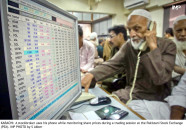
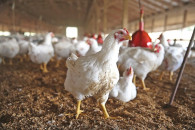
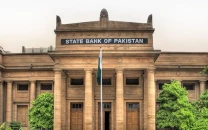

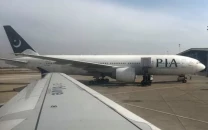


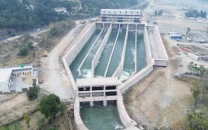

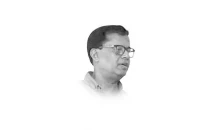





COMMENTS
Comments are moderated and generally will be posted if they are on-topic and not abusive.
For more information, please see our Comments FAQ